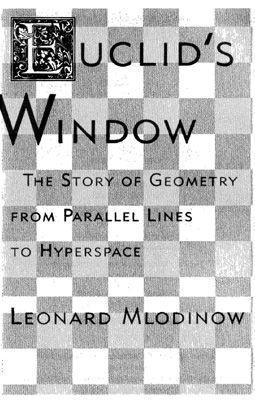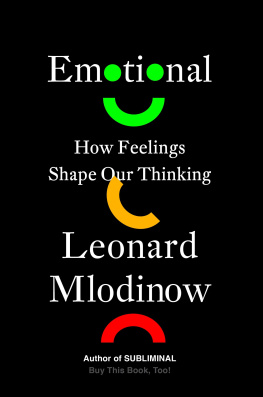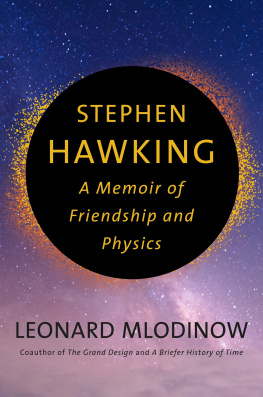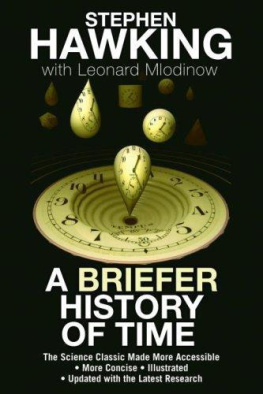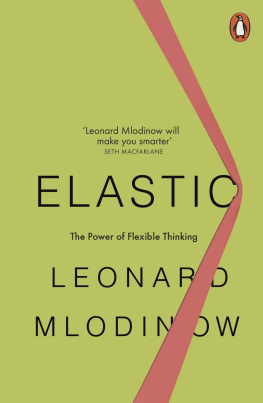THE FREE PRESS A Division of Simon & Schuster, Inc. ] 230 Avenue of the Americas New York, NY 10020
Designed by Jeanette Olender
Illustrations by Steve Arcella
Manufactured in the United States ofAmerica
I357 9 8642
Library of Congress Cataloging-in-Publication Data Mlodinow, Leonard Euclid's window: the story of geometry from parallel line to hyperspace I Leonard Mlodinow. p. cm. Includes bibliographical references and index. I. Geometry-History. I. Title. QA443.5 .M56 2001 00-54351
ISBN 0-684-86523-8
To Alexei and Nicolai, Simon and Irene
INTRODUCTION
Twenty-four centuries ago, a Greek man stood at the sea's edge watching ships disappear in the distance. Aristotle must have passed much time there, quietly observing many vessels, for eventually he was struck by a peculiar thought. All ships seemed to vanish hull first, then masts and sails. He wondered, how could that be? On a flat earth, ships should dwindle evenly until they disappear as a tiny featureless dot. That the masts and sails vanish first, Aristotle saw in a flash of genius, is a sign that the earth is curved. To observe the large scale structure of our planet, Aristotle had looked through the window of geometry.
Today we explore space as millennia ago we explored the earth. A few people have traveled to the moon. Unmanned ships have ventured to the outer reaches of the solar system. It is feasible that within this millennium we will reach the nearest star-a journey of about fiftyyears at the probably-someday-attainable speed of one-tenth the speed of light. But measured even in multiples of the distance to Alpha Centauri, the outer reaches of the universe are several billion measuring sticks away. It is unlikely that we will ever be able to watch a vessel approach the horizon of space as Aristotle did on earth. Yet we have discerned much about the nature and structure of the universe as Aristotle did, by observing, employing logic, and staring blankly into space an awful lot. Over the centuries, genius and geometry have helped us gaze beyond our horizons. What can you prove about space? How do you know where you are? Can space be curved? How many dimensions are there? How does geometry explain the natural order and unity of the cosmos? These are the questions behind the five geometric revolutions of world history.
It started with a little scheme hatched by Pythagoras: to employ mathematics as the abstract system of rules that can model the physical universe. Then came a concept of space removed from the ground we trod upon, or the water we swam through. It was the birth of abstraction and proof. Soon the Greeks seemed to be able to find geometric answers to every scientific question, from the theory of the lever to the orbits of the heavenly bodies. But Greek civilization declined and the Romans conquered the Western world. One day just before Easter in A.D. 415, a woman was pulled from a chariot and killed by an ignorant mob. This scholar, devoted to geometry, to Pythagoras, and to rational thought, was the last famous scholar to work in the library at Alexandria before the descent of civilization into the thousand years of the Dark Ages.
Soon after civilization reemerged, so did geometry, but it was a new kind of geometry. It came from a man most civilized-he liked to gamble, sleep until the afternoon, and criticize the Greeks because he considered their method of geometric proof too taxing. To save mental labor, Rene Descartes married geometry and number. With his idea of coordinates, place and shape could be manipulated as never before, and number could be visualized geometrically. These techniques enabled calculus and the development of modern technology. Thanks to Descartes, geometric concepts such as coordinates and graphs, sines and cosines, vectors and tensors, angles and curvature, appear in every context of physics from solid state electronics to the large-scale structure of space-time, from the technology of transistors and computers to lasers and space travel. But Descartes's work also enabled a more abstract-and revolutionary-idea, the idea of curved space. Do all triangles really have angle sums of 180 degrees, or is that only true if the triangle is on a flat piece of paper? It is not just a question of origami. The mathematics of curved space caused a revolution in the logical foundations, not only of geometry but of all of mathematics. And it made possible Einstein's theory of relativity. Einstein's geometric theory of space and that extra dimension, time, and of the relation of space-time to matter and energy, represented a paradigm change of a magnitude not seen in physics since Newton. It sure seemed radical. But that was nothing, compared to the latest revolution.
One day in June 1984, a scientist announced that he had made a breakthrough in the theory that would explain everything from why subatomic particles exist, and how they interact, to the large-scale structure of space-time and the nature of black holes. This man believed that the key to understanding the unity and order of the universe lies in geometry of a new and rather bizarre nature. He was carried off the stage by a group of men in white uniforms.
It turned out the event was staged. But the sentiment and genius were real. John Schwarz had been working for a decade and a half on a theory, called string theory, that most physicists reacted to in much the same way they would react to a stranger with a crazed expression asking for money on the street. Today, most physicists believe that string theory is correct: the geometry of space is responsible for the physical laws governing that which exists within it.
The manifesto of the seminal revolution in geometry was written by a mystery man named Euclid. If you don't recall much of that deadly subject called Euclidean Geometry, it is probably because you slept through it. To gaze upon geometry the way it is usually presented is a good way to turn a young mind to stone. But Euclidean geometry is actually an exciting subject, and Euclid's work a work of beauty whose impact rivaled that of the Bible, whose ideas were as radical as those of Marx and Engels. For with his book, Elements , Euclid opened a window through which the nature of our universe has been revealed. And as his geometry has passed through four more revolutions, scientists and mathematicians have shattered theologians' beliefs, destroyed philosophers' treasured worldviews, and forced us to reexamine and reimagine our place in the cosmos. These revolutions, and the prophets and stories behind them, are the subject of this book.
| I |
| THE STORY OF EUCLID |
| What can you say about space? How geometry began describing the universe and ushered in modern civilization. |
I. The First Revolution
EUCLlD was a man who possibly did not discover even one significant law of geometry. Yet he is the most famous geometer ever known and for good reason: for millennia it has been his window that people first look through when they view geometry. Here and now, he is our poster boy for the first great revolution in the concept of space-the birth of abstraction, and the idea of proof.
The concept of space began, naturally enough, as a concept of place, our place, earth. It began with a development the Egyptians and Babylonians called "earth measurement." The Greek word for that is geometry, but the subjects are not at all alike. The Greeks were the first to realize that nature could be understood employing mathematics-that geometry could be applied to reveal, not merely to describe. Evolving geometry from simple descriptions of stone and sand, the Greeks extracted the ideals of point, line, and plane. Stripping away the window-dressing of matter, they uncovered a structure possessing a beauty civilization had never before seen. At the climax of this struggle to invent mathematics stands Euclid. The story of Euclid is a story of revolution. It is the story of the axiom, the theorem, the proof, the story of the birth of reason itself.

